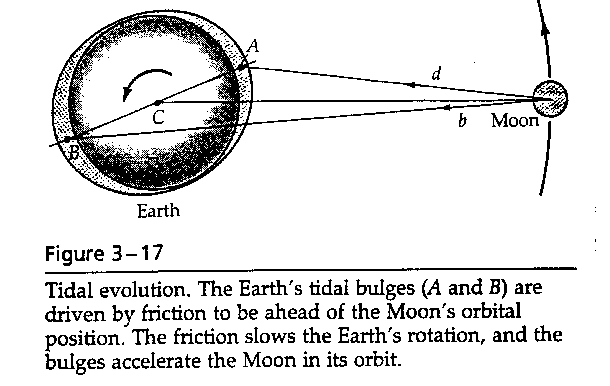
So clearly the Moon influences the Earth in more than just an aesthetic way.
Think about this for class:
In what other ways does the moon affect the Earth and its inhabitants?
As the Moon's tidal forces raise bulges on the Earth, the Earth's rotation moves these bulges forward to lead the Moon:

So the moon is being accelerated forwards, as if it had a little rocket on its back firing away.
Think about what happens in an orbit if you accelerate forwards. You are adding energy and angular momentum to your orbit, so you move outwards into a larger orbit with a longer orbital period.
The Moon is slowly moving away from the Earth!
How fast? About 3-4 cm/yr. (How do we measure this?)
So the moon is moving away, gaining energy and angular momentum from the Earth. But a basic law of physics says that energy and angular momentum are conserved (if there are no external torques).
So if the Moon gains angular momentum, the Earth must lose angular momentum.
The Earth's rotation rate is gradually slowing!
How fast? About
0.0016 seconds/century, or roughly
1 second every 50,000 years.
So a "dinosaur day" was about 23.5 hours
long, not 24 hours long.
(Extrapolation doesn't work too far
back, but best current models suggest that when the Earth and Moon were closest
several billion years ago, one day was about 4-5 hours long!)
Remember:
(What other familiar object is in a 1:1 synchronous rotation?)
At this point, with the bulges aligned
with the Moon, no further orbit evolution will occur.